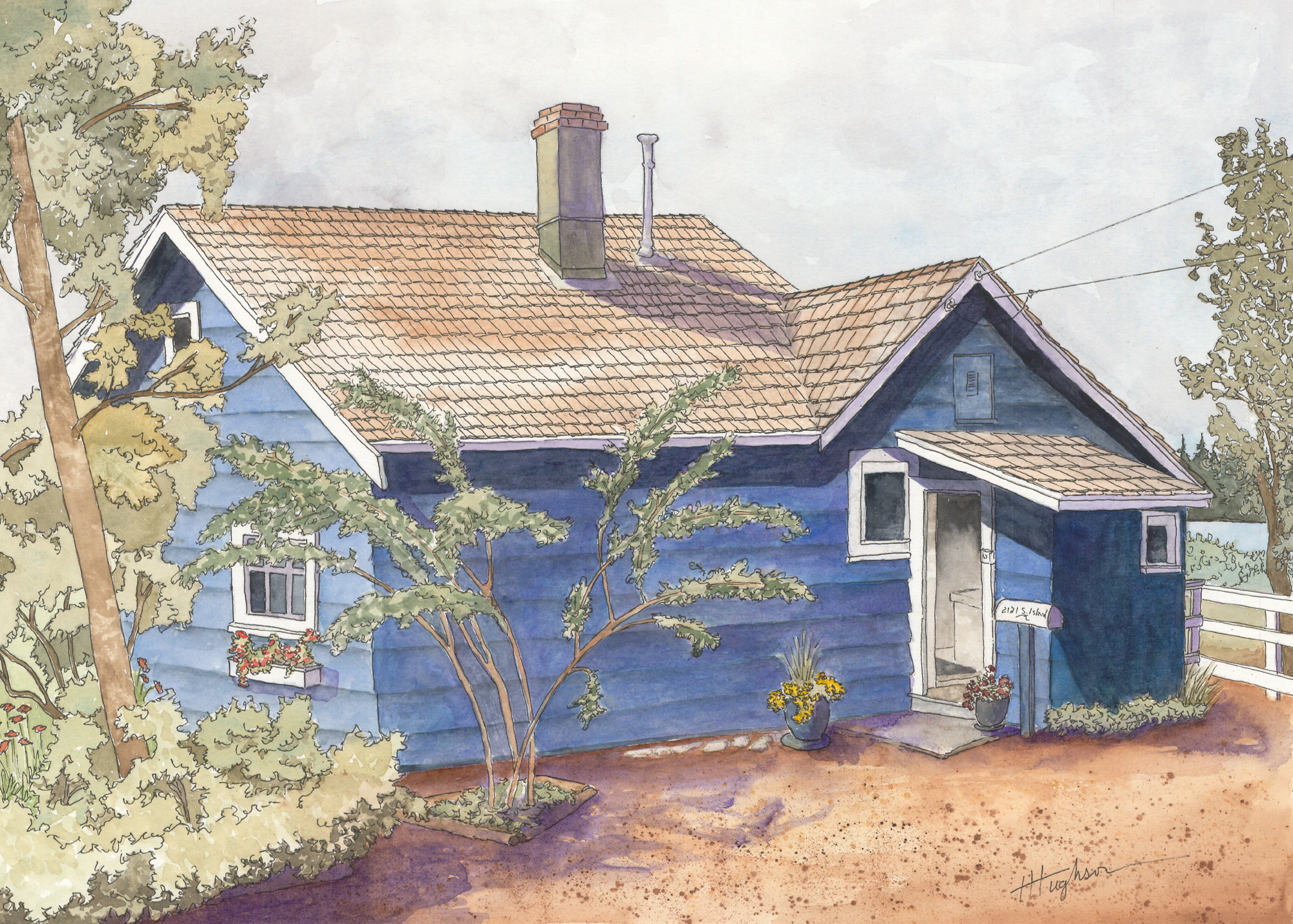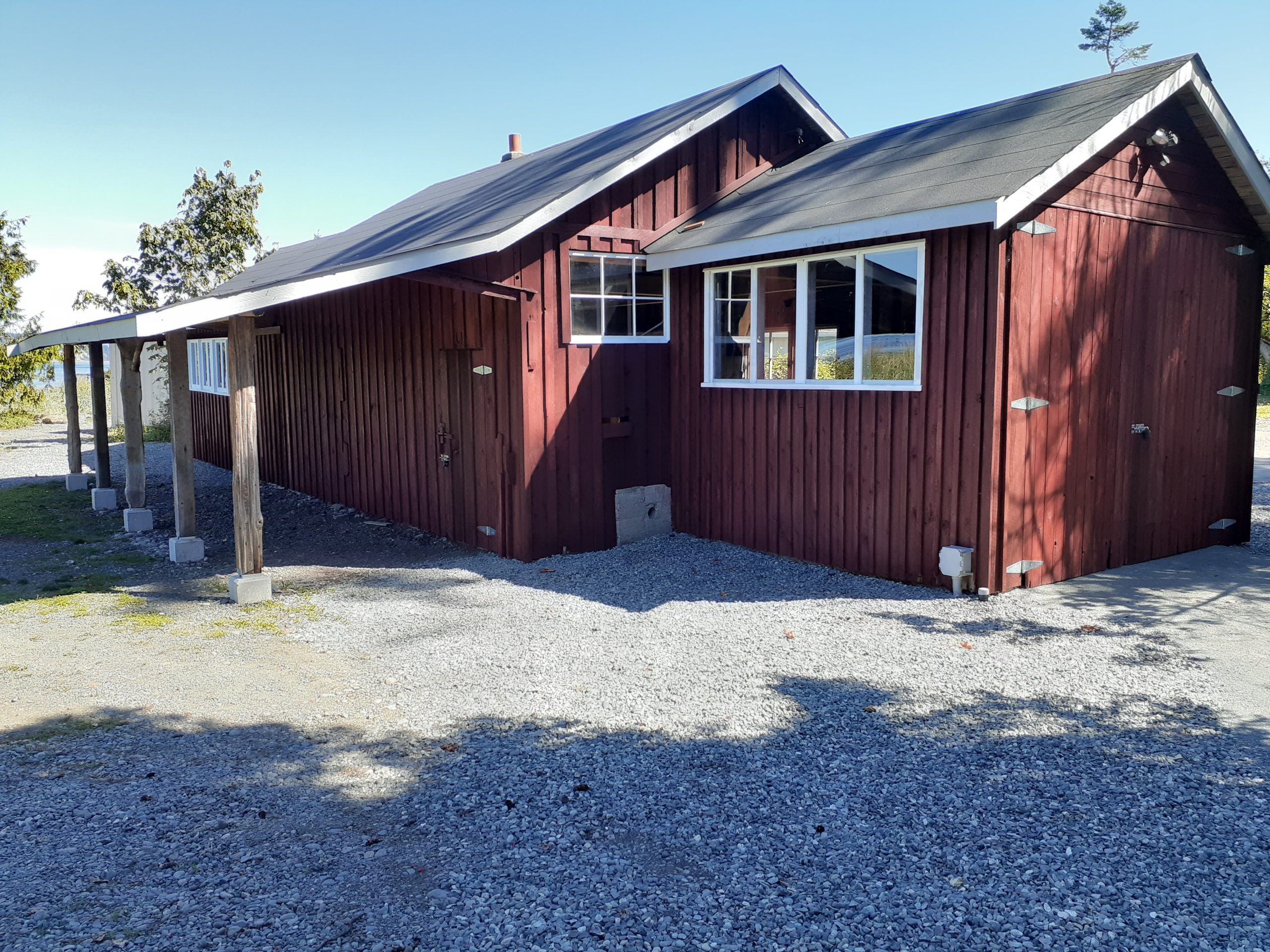ABOUT SYBIL ANDREWS
Born in 1898 in Bury St Edmunds, Andrews was unable to attend art school after finishing secondary school as her family lacked the funds to pay for tuition. Andrews first apprenticed as a welder and worked at an aeroplane factory during World War I, where she helped in the development of the first all-metal aeroplane for the Bristol Welding Company. Between 1922 and 1924 Andrews attended the Heatherley School of Fine Art in London.
In 1925 she was employed by Iain Macnab as the first secretary of The Grosvenor School of Modern Art, where she also attended Claude Flight’s linocutting classes. Andrews became focused on linocuts during the 1920s and 1930s under the tutelage of Claude Flight, instructor and champion of linocutting at the Grosvenor School. Flight, a proponent of the relatively new medium, believed that linocuts were most appropriate for expressing the modern age. Andrews’ contemporaries, fellow students of Claude Flight, include Swiss artist Lill Tschudi, and Australian artists Dorrit Black, Ethel Spowers, and Eveline Syme. The Grosvenor School style was influenced by elements of cubism, futurism and vorticism – capturing the machine age through dynamism and movement.
With the beginning of World War II, Andrews resumed work as a welder for the British Power Company, constructing warships. There she met Walter Morgan, whom she married in 1943. In 1947 she and Morgan emigrated to Canada and settled in Campbell River, British Columbia. Seeking a new life together after the depression of two world wars, Andrews and Morgan moved to a small cottage in Willow Point. From the cottage Sybil taught art and music until her death in 1992. Over 100 pieces of her work in linocut, watercolour, woodcut and drawing are held in the collection of the Museum at Campbell River.

ABOUT WALTER MORGAN
Walter Morgan may not be as recognizable as his wife, world renowned artist Sybil Andrews; however, his impact, much like Sybil’s, was dearly felt in Campbell River.
Walter was born in Hampshire in 1894 and led a full life before meeting Sybil. As a young man he served as a sergeant in the military, and was stationed in Northern Ireland when World War I began. He married his first wife, Winifred Bailey, in 1915. Within a year of their wedding Walter suffered a gunshot wound to his left forearm which resulted in its amputation. He was honourably discharged, and fashioned his own prosthetic arm of aluminum and leather. The prosthesis enabled him to work as a carpenter, machinist and boat builder for the remainder of his career.
He had two children with Winifred; a daughter, Doris, and a son, Joey. Tragically, Joey passed away at the young age of 14. Doris had already married and started a family when Walter’s losses continued; Winifred lost a battle with colon cancer in 1942.
During World War II, Walter was working at the British Powerboat Company where he met Sybil. The pair were married in 1943 and following the war sought opportunities away from war ravaged England. Walter had always been fascinated by British Columbia and so in 1947 the pair made their way to the west coast, starting a new life at the ages of 53 and 49. After exploring the province, the pair decided to purchase this small blue cottage with an outbuilding on the beach in Willow Point.
Walter established Morgan Boat Works from this studio in 1948. He took on other jobs and projects in addition to his boat building business. He made wooden rocking horses for the Hudson’s Bay Company, which were painted by Sybil, and he spent five years working on the radial and band saws at the Elk Falls Mill, one of the largest employers in Campbell River at the time. Walter was a talented carpenter. In addition to boatbuilding, he made beautiful turned wooden bowls, many of which he gave away as gifts. Most of the furniture owned by the couple was made by Walter. He also put his metalworking/machinist skills to use, not only making his own prosthesis, but also building functioning model steam engines.
Walter’s prosthesis had a hook in place of a hand, and due to his penchant for building boats and wearing a cap, he was often affectionately referred to as Captain Hook by the local children.
Walter passed away in 1986 at the age of 91. After he passed, Sybil kept a shrine to Walter in this studio, placing his prosthesis and favourite cap on the table.

SYBIL ANDREWS HERITAGE SOCIETY
Through the efforts of the Sybil Andrews Heritage Society, the Campbell River Arts Council and the City of Campbell River, the cottage underwent a large scale restoration project in 2011. At that time, the Campbell River Noon Rotary Club donated an additional $7,000 and hundreds of hours of volunteer labour to replace the roof on the Walter Morgan Studio to aid in its long-term preservation. By 2018, the studio required extensive restoration. The project undertaken by the City of Campbell River in 2019 included the replacement of rotten board and batten siding, window rehabilitation, roof reinforcement, repairs to the chimney and floor, perimeter drain, and electrical work.
The restoration project team included John Dam and Associates Heritage Engineers, Dewhirst Lessard Heritage Consultants, 2Hills Renovations, and Jim Stiven.
It is the hope that together the studio and cottage will continue the legacy of Sybil and Walter by hosting artists in residence and other programming led by the Campbell River Arts Council, and interpreting the history of Sybil and Walter and their impact upon the local community.
COTTAGE RENTAL SPACE FOR ARTS EVENTS
Sybil Andrews Cottage is available for arts and culture groups to rent for arts-related events and workshops. With a 40-person maximum capacity, the space is approximately 1,000 square feet plus an oceanfront yard. A basic kitchen is available for use with rental, as well as tables and chairs. As an unlicenced location, alcohol is not permitted onsite. For availability and more detailed information, please contact us.
Rental Time |
Members |
Non-Members |
| Dayparts: Morning – Afternoon – Evening | $25 each daypart | $50 each daypart |
